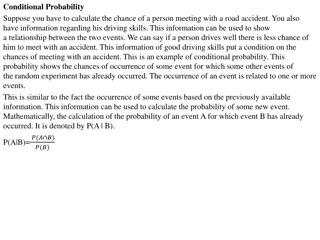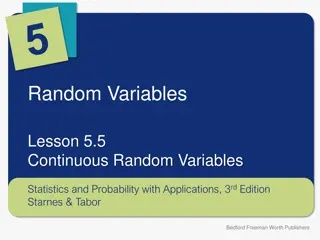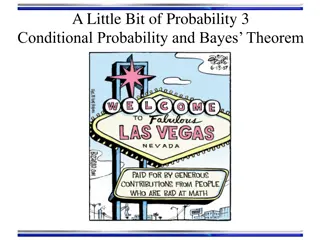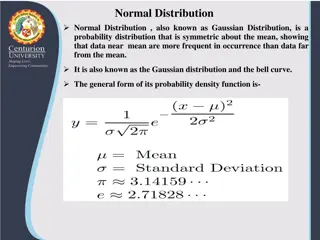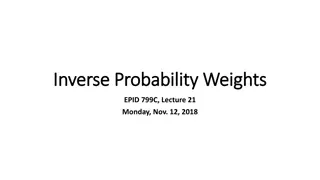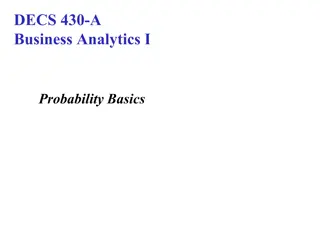
Theoretical Probability Distributions in Statistics
Explore different types of theoretical probability distributions such as binomial distribution, Poisson distribution, and normal distribution. Learn how these distributions model various scenarios and help in predicting outcomes in statistical analysis.
Download Presentation

Please find below an Image/Link to download the presentation.
The content on the website is provided AS IS for your information and personal use only. It may not be sold, licensed, or shared on other websites without obtaining consent from the author. If you encounter any issues during the download, it is possible that the publisher has removed the file from their server.
You are allowed to download the files provided on this website for personal or commercial use, subject to the condition that they are used lawfully. All files are the property of their respective owners.
The content on the website is provided AS IS for your information and personal use only. It may not be sold, licensed, or shared on other websites without obtaining consent from the author.
E N D
Presentation Transcript
Probability Distribution
Theoretical Distribution A random exponent is assumed as a model for theoretical distribution, and the probabilities are given by a function of the random variable is called probability function. For example, if we toss a fair coin, the probability of getting a head is 12. If we toss it for 50 times, the probability of getting a head is 25. We call this as the theoretical or expected frequency of the heads. But actually, by tossing a coin, we may get 25, 30 or 35 heads which we call as the observed frequency. Thus, the observed frequency and the expected frequency may equal or may differ from each other due to fluctuation in the experiment.
Types of Theoretical Distribution Binomial Distribution Poisson distribution Normal distribution or Expected Frequency distribution
Binomial Distribution: The prefix Bi means two or twice. A binomial distribution can be understood as the probability of a trail with two and only two outcomes. It is a type of distribution that has two different outcomes namely, success and failure . Also, it is applicable to discrete random variables only. Thus, the binomial distribution summarized the number of trials, survey or experiment conducted. It is very useful when each outcome has an equal chance of attaining a particular value. The binomial distribution has some assumptions which show that there is only one outcome and this outcome has an equal chance of occurrence.
The number of the trial or the experiment must be fixed.Every trial is independent. None of your trials should affect the possibility of the next trial. The probability always stays the same and equal. The probability of success may be equal for more than one trial.
Poisson Distribution : The Poisson Distribution is a theoretical discrete probability distribution that is very useful in situations where the events occur in a continuous manner. Poisson Distribution is utilized to determine the probability of exactly x0 number of successes taking place in unit time. Let us now discuss the Poisson Model. At first, we divide the time into n number of small intervals, such that n and p denote the probability of success, as we have already divided the time into infinitely small intervals so p 0. So the result must be that in that condition is n x p = (a finite constant).
Normal Distribution : The Normal Distribution defines a probability density function f(x) for the continuous random variable X considered in the system. The random variables which follow the normal distribution are ones whose values can assume any known value in a given range. We can hence extend the range to to + . Continuous Variables are such random variables and thus, the Normal Distribution gives you the probability of your value being in a particular range for a given trial. The normal distribution is very important in the statistical analysis due to the central limit theorem. The theorem states that any distribution becomes normally distributed when the number of variables is sufficiently large. For instance, the binomial distribution tends to change into the normal distribution with mean and variance.



